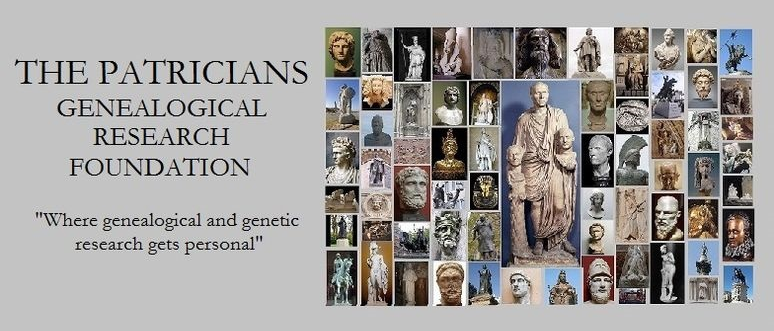








The “real-life” Beowulf (born Elfhere Scylding, King of Geatland) reigned as King of England for a couple of months in 541 before his permanent expulsion from England by a coalition of native Briton kings. Havelok the Dane, his grandson, returned to rule the island nation (560 – 565) on a friendly basis after marrying heiress Goldborough, the 2nd great-granddaughter of Icel of Angel, 1st Iclingas King of Mercia (455 – 501).
Hereward the Wake’s life (1040 – 1072) bears a striking similarity to the heroic mention of the Heoroweard character portrayed in the epic Anglo-Saxon poem Beowulf as well as his role as a heroic figure in other legends of the Scylding dynasty. He’s briefly portrayed as the son of Hroðgar Halfdansson (526 – 620), the Scylding King of Denmark. Hereward was the English primogenitor of the House of Howard and the Howard Dukes of Norfolk, the Premier Dukes and Earls of the Realm
Other Beowulf characters in the pantheon of Germanic historic fame during the “Beowulf” (400 to 600) era include:
Finn, a Frisian lord whose tale picks up where the Finnsburg Fragment ends. The agnatic ancestor of Redbad “The Pagan”, 9th King of Friesland (670 – 719) Fab Pedigree
Hengest – a Danish lord who attacked the Frisians to avenge Hnæf, Hengest Wihtgilsson von Sachsen, 1st Jute King of Kent (414 – 488)
Hroðgar – king of the Danes; married to Wealhþeow. Hroðgar Halfdansson (526 – 620) King of Denmark
Merewing – a Frankish king, Merovech Meroving, grandfather of Clovis I Meroving (466 – 511) 1st King of Franks, 1st Christian Ruler of Gaul
Offa of Angel, a king of the Angles who also appears in the Norse tradition. The agnatic forebear of Icel of Angel, 1st Iclingas King of Mercia (455 – 501)
In his book The Origins of Beowulf: and the Pre-Viking Kingdom of East Anglia, Dr. Sam Newton argues the poem was written in East Anglia during the 8th century. Angles began settling in East Anglia in large numbers during the 5th century and significantly displaced the indigenous inhabitants shortly thereafter. My own speculation is that it was likely written by Isle of Ely monks (Hereward the Wake took sanctuary there at the invitation of the occupying Danes) during the 8th century, who chose the robustly heroic Beowulf to aggrandize the Angles and their Germanic race. speculatively, as part of a propaganda agenda to legitimize their conquest of the indigenous peoples, they were ultimately displaced in that part of England.
So, the poem is more akin thematically to Geoffrey of Monmouth‘s pseudo-historical chronicle The History of the Kings of Britain, whereby the tale, including the life and times of Arthwyr Pendragon (480 – 537) King of Camelot, represents an attempt by the author to tailor a chronologically disparate cast of medieval heroic characters into what’s essentially a propaganda story designed to establish the English monarch at the time as quintessentially empowered to rule over their realm. Ironically, however, my own recent genealogical research somewhat favors Geoffrey’s account (more to be said later).
Skjöldr, the first Scylding of the legendary royal house of Denmark, was Beowulf’s agnatic forebear. He was the son of Sigge “Odin” Fridulfsson of Asgard (50 BC – 30 AD) 1st King of Scandinavia. His mother Frigg (Frigida) was a legendary direct descendant of Coilus Coel I (80 – 170), the first King of Britons, who were mainly of ancient Welsh descent.
Related ancestral blog articles
List of agnatic descendants of Sigge “Odin” Fridulfsson of Asgard (50 BC – 30 AD)
Norse-Norman-Anglo-Saxon Ancestors
Snorri Sturluson (1179 – 1241) Icelandic Poet, Author of the “Prose Edda”
Elfhere Scylding “Beowulf”, King of Geatland
BIRTH 526 • Rosekilde, Denmark
DEATH 620 • (Bernicia) Northumbria, England
agnatic descendant of Sigge “Odin” Fridulfsson of Asgard (50 BC – 30 AD) 1st King of Scandinavia
Ancestry.com citation/Lineages
48th great-grandfather YNGLING-ORKNEY-COLLINS
52nd great-grandfather COLLINS agnatic descent
53rd great-grandfather WOODWORTH-MERRITT-SIMMONS-COLLINS
husband of 43rd great-grandaunt NORMANDY-D’EVREUX-MARSHALL-WARREN-CARRINGTON-HOLLAND-SIMMONS-COLLINS
husband of 44th great-grandaunt YNGLING-NORMANDY-PLANTAGENET-HOWARD-WOOD-COLLINS
husband of 50th great-grandaunt YNGLING-NORMANDY-D’EU-HASTINGS-HERON-COLLINGWOOD-COLLINS
husband of 6th cousin 50x removed SAXONS-WESSEX-HOWARD-WOOD-COLLINS
SOURCES
Beowulf (2007 film)
Beowulf & Grendel (2005 film)
The Origins of Beowulf: and the Pre-Viking Kingdom of East Anglia by Sam Newton, Ph.D (2004)
Ogier the Dane lived for 300 years without aging
Heytir Gorsson, Sea King Geni – candidate to replace Ogier the Dane on lineage chart
Havelok the Dane Fab Pedigree
Witnesses to the Israelite Origin of the Nordic, Germanic, and Anglo-Saxon Peoples
Beowulf: A New Verse Translation
Beowulf: An Introduction to the Study of the Poem with a Discussion of the Stories of Offa and Finn
The Patricians, A Genealogical Study – Ebook Editions (Epub, PDF & Kindle) US$5.95


Steven Wood Collins (1952 – still living) Antiquarian, Genealogist, Novelist


31 replies on “Elfhere Scylding “Beowulf”, King of Geatland (526 – 620)”
[…] Elfhere Scylding “Beowulf”, King of Geatland (526 – 620) […]
LikeLike
[…] Elfhere Scylding “Beowulf”, King of Geatland (526 – 620) […]
LikeLike
[…] Elfhere Scylding “Beowulf”, King of Geatland (526 – 620) […]
LikeLike
[…] Elfhere Scylding “Beowulf”, King of Geatland (526 – 620) […]
LikeLike
[…] Elfhere Scylding “Beowulf”, King of Geatland (526 – 620) […]
LikeLike
[…] Elfhere Scylding “Beowulf”, King of Geatland (526 – 620) […]
LikeLike
[…] Elfhere Scylding “Beowulf”, King of Geatland (526 – 620) […]
LikeLike
[…] Elfhere Scylding “Beowulf”, King of Geatland (526 – 620) […]
LikeLike
[…] Elfhere Scylding “Beowulf”, King of Geatland (526 – 620) […]
LikeLike
[…] Elfhere Scylding “Beowulf”, King of Geatland (526 – 620) […]
LikeLike
[…] Elfhere Scylding “Beowulf”, King of Geatland (526 – 620) […]
LikeLike
[…] Elfhere Scylding “Beowulf”, King of Geatland (526 – 620) […]
LikeLike
[…] Elfhere Scylding “Beowulf”, King of Geatland (526 – 620) […]
LikeLike
[…] Elfhere Scylding “Beowulf”, King of Geatland (526 – 620) […]
LikeLike
[…] Elfhere Scylding “Beowulf”, King of Geatland (526 – 620) […]
LikeLike
[…] Elfhere Scylding “Beowulf”, King of Geatland (526 – 620) […]
LikeLike
[…] Elfhere Scylding “Beowulf”, King of Geatland (526 – 620) […]
LikeLike
[…] Elfhere Scylding “Beowulf”, King of Geatland (526 – 620) […]
LikeLike
[…] Elfhere Scylding “Beowulf”, King of Geatland (526 – 620) […]
LikeLike
[…] Elfhere Scylding “Beowulf”, King of Geatland (526 – 620) 3GGF agnatic 35 […]
LikeLike
[…] Elfhere Scylding “Beowulf”, King of Geatland (526 – 620) […]
LikeLike
[…] Elfhere Scylding “Beowulf”, King of Geatland (526 – 620) […]
LikeLike
[…] Elfhere Scylding “Beowulf”, King of Geatland (526 – 620) […]
LikeLike
[…] Elfhere Scylding “Beowulf”, King of Geatland (526 – 620) […]
LikeLike
[…] Elfhere Scylding “Beowulf”, King of Geatland (526 – 620) 3GGF agnatic 35 YDNA […]
LikeLike
[…] Elfhere Scylding “Beowulf”, King of Geatland (526 – 620) 3GGF agnatic […]
LikeLike
[…] Elfhere Scylding “Beowulf”, King of Geatland (526 – 620) […]
LikeLike
[…] Elfhere Scylding “Beowulf”, King of Geatland (526 – 620) […]
LikeLiked by 1 person
[…] Elfhere Scylding “Beowulf”, King of Geatland (526 – 620) […]
LikeLiked by 1 person
[…] Elfhere Scylding “Beowulf”, King of Geatland (526 – 620) […]
LikeLiked by 1 person
[…] Elfhere Scylding “Beowulf”, King of Geatland (526 – 620) […]
LikeLiked by 1 person